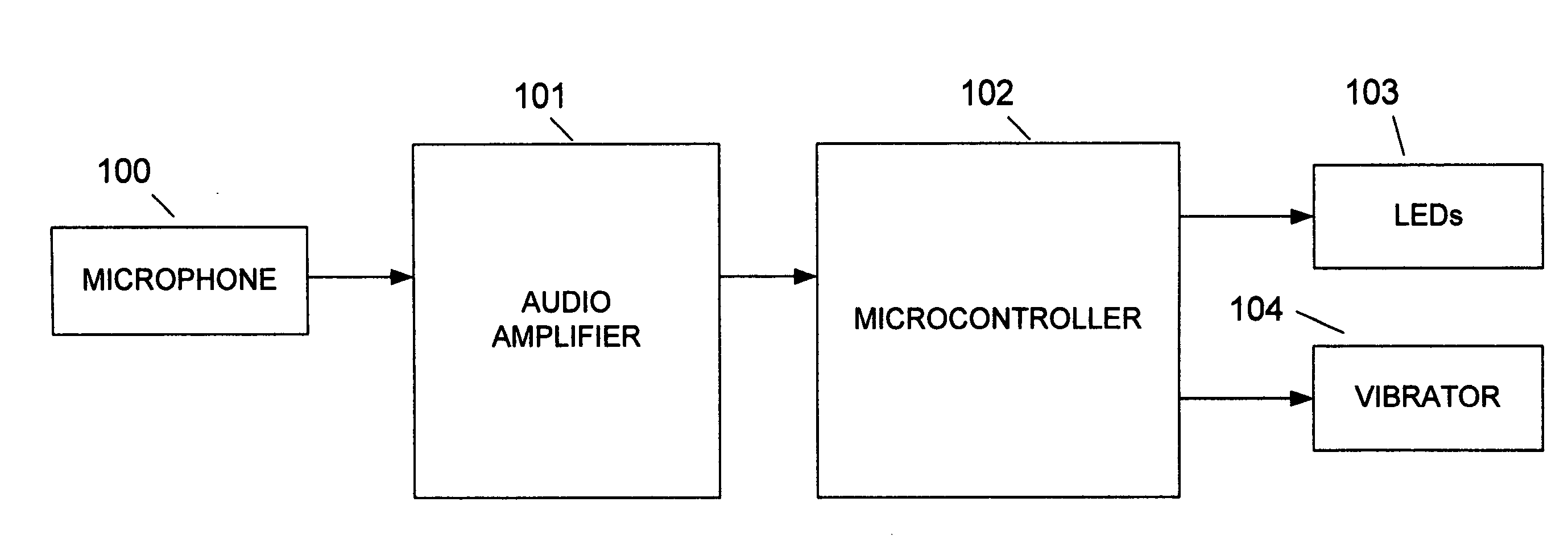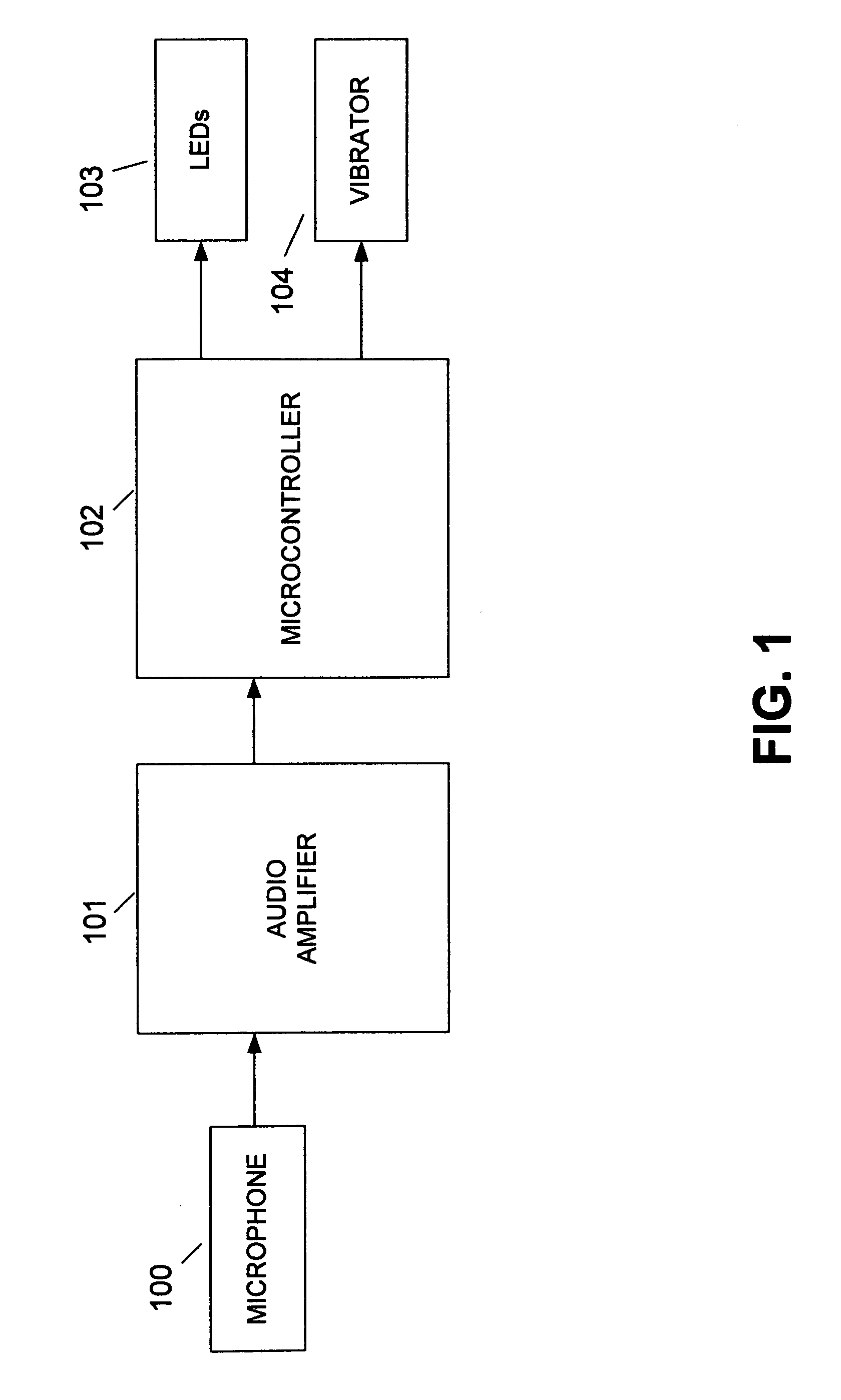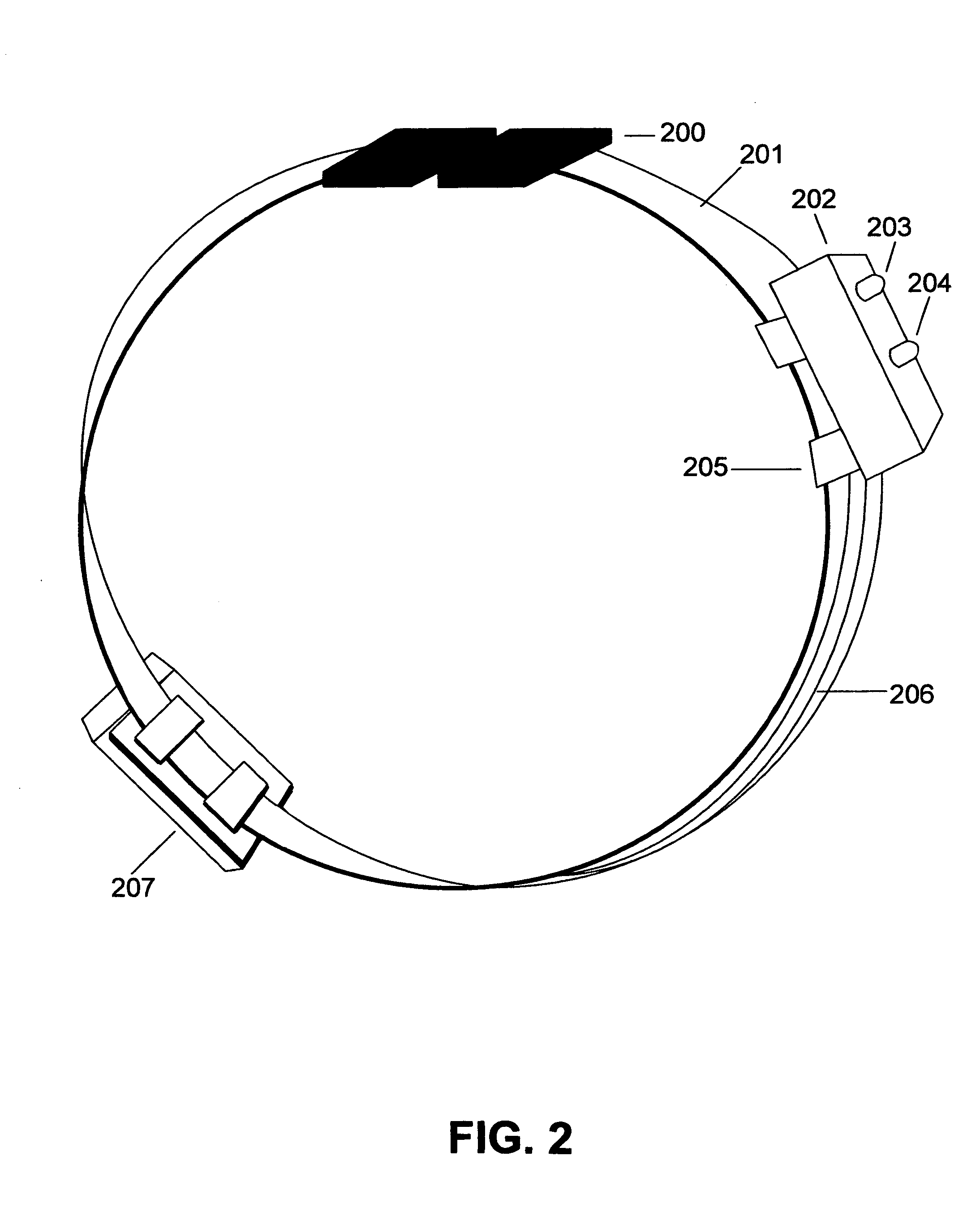Hearing apparatus for pets
a hearing apparatus and pet technology, applied in the field of hearing devices, can solve the problems of people, can lose their hearing, become more than a quality-of-life issue, and limited success, and achieve the effect of minimizing false activation
- Summary
- Abstract
- Description
- Claims
- Application Information
AI Technical Summary
Benefits of technology
Problems solved by technology
Method used
Image
Examples
Embodiment Construction
[0027]A detailed description of the present invention is provided below with reference to the figures. While illustrative component values and software functions are given, other embodiments can be constructed by those familiar with the art.
[0028]FIG. 1 depicts the main sections of the present invention, less the power source. The power source itself, including, but not limited to, “AAA” to “D” sized battery or batteries, uses standard-in-the-industry techniques to provide the 3 volts required by the circuitry, and, as such, not described in detail. Likewise, additional circuit features such as reverse-battery protection and low-voltage design are also industry-standard and therefore not discussed.
[0029]A preferred embodiment, as described below, uses two AAA batteries to provide the 3 volts required for the uC, vibrator, and supporting electronics.
[0030]While intended primarily for dogs, cats, and horses, any hard-of-hearing or deaf animal, sufficiently strong to wear this inventio...
PUM
 Login to View More
Login to View More Abstract
Description
Claims
Application Information
 Login to View More
Login to View More - R&D
- Intellectual Property
- Life Sciences
- Materials
- Tech Scout
- Unparalleled Data Quality
- Higher Quality Content
- 60% Fewer Hallucinations
Browse by: Latest US Patents, China's latest patents, Technical Efficacy Thesaurus, Application Domain, Technology Topic, Popular Technical Reports.
© 2025 PatSnap. All rights reserved.Legal|Privacy policy|Modern Slavery Act Transparency Statement|Sitemap|About US| Contact US: help@patsnap.com



